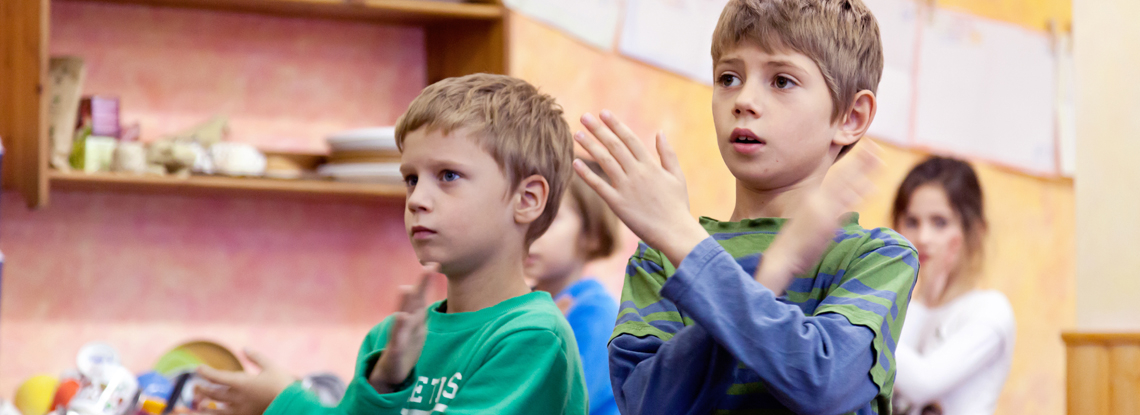What is Waldorf Education?
A quick initial overview on Waldorf Education can be found on the website of the German Federation of Waldorf Schools. Below we feature excerpts. If you would like to to know more visit waldorfschule.de.
More information on the key characteristics of Waldorf education and Waldorf schools can be found in the revised paper of the International Conference (Hague Circle): German, English, Spanish, French

The first Waldorf School
...was founded in Stuttgart in 1919 by Emil Molt (1876 – 1936) and Rudolf Steiner (1861-1925) and was the first school to put the principle of social justice in education into practice. Young people were educated together, irrespective of social background, abilities and vocation. The Waldorf School in Stuttgart was the first comprehensive school to replace the principle of selection by a pedagogy of encouragement and support.
Repeating a year is not an option
All students go through 12 school years without repeating classes; the whole curriculum of Waldorf schools is based on the development needs of the individual student, taking emotional, intellectual and personal abilities and needs into account. The curriculum is integrated, inter-disciplinary and artistic. Thus imagination and creativity, which are most important for the individual as well as for society are awakened and developed.
Arts and Crafts
All kinds of crafts stimulate a differentiated development of the will and a practical orientation of the student towards life.
Development-oriented curriculum
A crucial principle of the Waldorf curriculum lies in the coordination of the teaching content and teaching methods to the child's learning process and the stages of human development in childhood and adolescence. The lessons are designed with the aim the foster the inner human freedom and independence.
Education of the imagination
During the school years when the students develop their own power of judgement imaginative education is an important principle of education. Facts are dealt with in a way that enables the student to understand and see them on the basis of their laws and characteristics as living images that are based on experience.
Sciences
The scientific character of many subjects from the 9th to the 12th grade is seen in close connection with the pursuit of individuality and the increasing power of judgement which start to develop around the age of fourteen. Waldorf schools understand their educational task not as pre-university-education but they want to teach young people in a way that has something to do with their needs and which can lead them to find answers to their questions.
Block teaching
The method of teaching in blocks enables the teaching to be economic. It is applied to subjects such as the mother tongue History, mathematics, natural sciences etc. Subjects which need to be practiced continuously like arts and foreign languages are taught in subject lessons – the latest development being that some Waldorf schools have switched over to block teaching even in those subjects.
Self-administration
The Waldorf schools have replaced the hierarchically organised administration of state schools by a independent constitution of their own in which parents and teachers work together. Pedagogical management and control are carried out through the weekly conference of teachers in which all teachers have equal rights. The common basis is understanding of the developing human being seen from an anthroposophical perspective.
